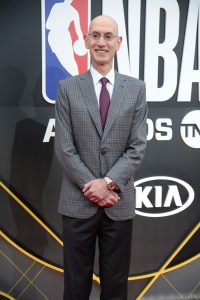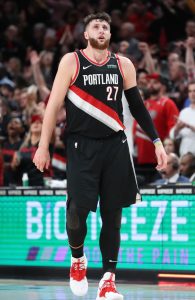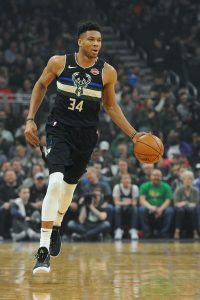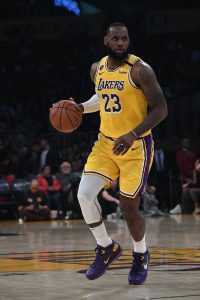The 2020 NBA draft lottery, originally scheduled for May 19, will now take place on August 20, two weeks from today. Besides happening three months later than usual, this year’s lottery also figures to look a little different, since the ongoing coronavirus pandemic will almost certainly make it impossible for the NBA to bring representatives from the bottom 14 teams to a single location.
As we wait to see what the league has in mind for this year’s event, here are a few updates and reminders on the 2020 NBA draft lottery:
The bottom eight teams are already locked into their lottery spots
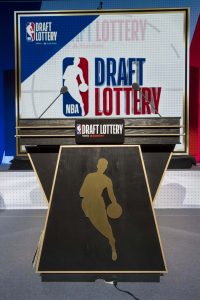 Much has been made in the last 24 hours about the Wizards (24-44), who are participating in the NBA’s summer restart, slipping below the inactive Hornets (23-42) in the Eastern Conference standings.
Much has been made in the last 24 hours about the Wizards (24-44), who are participating in the NBA’s summer restart, slipping below the inactive Hornets (23-42) in the Eastern Conference standings.
Fortunately for Hornets fans – and unfortunately for Wizards backers – the lottery odds for those two teams won’t hinge on which team finishes with the better overall record. For the NBA’s bottom eight teams, one silver lining of not getting an invite to Orlando this summer for the restart is that their spot in the top eight of the lottery has been locked in, based on the league standings as of March 11.
The Hornets will have the eighth-best odds and the Bulls will have the seventh-best odds even if the Wizards go 0-8 this summer and fall below both teams in the standings.
The race for the No. 8 seed in the Western Conference could impact the lottery odds
With the non-Orlando teams frozen in the top eight lottery positions, the other six spots will be determined by two factors:
- Which six teams in Orlando don’t make the playoffs.
- What their records were as of March 11.
This is great news for a team like Phoenix. Having won their first three games in Orlando – as the Grizzlies lost their first four – the Suns are very much alive in the race for the No. 8 seed in the West. It will still take a strong finish and some luck for the Suns to qualify for a play-in tournament, but let’s suppose they do.
In that scenario, if the Suns win the play-in tournament and earn a postseason spot, their first-round pick would be 15th overall, best among the playoff teams, since they entered the hiatus with a 26-39 record, worse than Orlando or Brooklyn.
If they were to lose a play-in tournament, Phoenix would end up with the 10th-best lottery odds, ahead of the rest of Orlando’s non-playoff teams besides the Wizards, who were the only one of the 22 invited teams with a worse record than the Suns as of March 11.
Essentially, if you want to determine the back half of the lottery standings, you just have to sort the 22 teams in Orlando by their March 11 records, from worst to first, then remove the 16 teams that end up in the playoffs.
The Grizzlies could theoretically still keep their first-round pick
The Grizzlies owe their 2020 first-round pick to the Celtics, but it includes top-six protection.
As long as Memphis makes the playoffs, that protection doesn’t really matter — Boston would receive the pick. However, with the Grizzlies’ hold on the No. 8 seed slipping, there’s still an outside chance that they could keep the pick.
Let’s say Memphis falls out of the No. 8 spot and either loses a play-in tournament or altogether misses out on qualifying for a play-in. In that scenario, the Grizzlies would enter the lottery with the 14th-best odds, since they had a better record on March 11 than any of their fellow lottery teams. That would give them a 2.4% chance at moving into the top four, where their pick would be protected.
Those aren’t good odds. In all likelihood, missing the playoffs would just mean the Grizzlies sent the Celtics the No. 14 pick instead of a selection in the 15-17 range. Still, the outside chance at another top pick would at least be a small silver lining if Memphis can’t grab that No. 8 spot. If the Grizzlies do hang onto this year’s pick, they’d owe Boston an unprotected first-rounder in 2021.
Over in the East, the Nets owe a lottery-protected pick to the Timberwolves and would keep it if they fall out of the postseason. However, the Wizards’ struggles have essentially ruled out that possibility. One more Brooklyn win or Washington loss will ensure that the Nets make the playoffs and send their pick to Minnesota.
Current lottery odds
Listed here are the odds for the teams not invited to Orlando, who will hold the top eight spots in the lottery standings.
The numbers in the chart indicate percentages, so the Warriors, for example, have a 14% chance of landing the No. 1 pick and a 47.9% chance of ending up at No. 5. If a team’s odds are listed as >0, that percentage is below 0.1%.
| Team | 1 | 2 | 3 | 4 | 5 | 6 | 7 | 8 | 9 | 10 | 11 | 12 |
|---|---|---|---|---|---|---|---|---|---|---|---|---|
| GSW | 14 | 13.4 | 12.7 | 12 | 47.9 | – | – | – | – | – | – | – |
| CLE | 14 | 13.4 | 12.7 | 12 | 27.8 | 20 | – | – | – | – | – | – |
| MIN | 14 | 13.4 | 12.7 | 12 | 14.8 | 26 | 7.1 | – | – | – | – | – |
| ATL | 12.5 | 12.2 | 11.9 | 11.5 | 7.2 | 25.7 | 16.8 | 2.2 | – | – | – | – |
| DET | 10.5 | 10.5 | 10.6 | 10.5 | 2.2 | 19.6 | 26.7 | 8.8 | 0.6 | – | – | – |
| NYK | 9 | 9.2 | 9.4 | 9.6 | – | 8.6 | 29.6 | 20.6 | 3.8 | 0.2 | – | – |
| CHI | 7.5 | 7.8 | 8.1 | 8.5 | – | – | 19.7 | 34.1 | 12.9 | 1.3 | >0 | – |
| CHA | 6 | 6.3 | 6.7 | 7.2 | – | – | – | 34.5 | 32.1 | 6.7 | 0.4 | >0 |
The tentative odds for the bottom six spots, assuming the Grizzlies hang onto the No. 8 seed, can be found right here.
Photo courtesy of USA Today Sports Images.
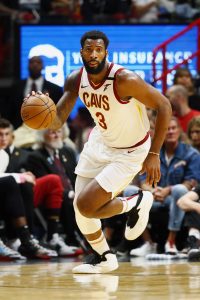
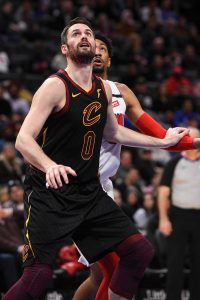 Ever since it became clear in 2018 that
Ever since it became clear in 2018 that 